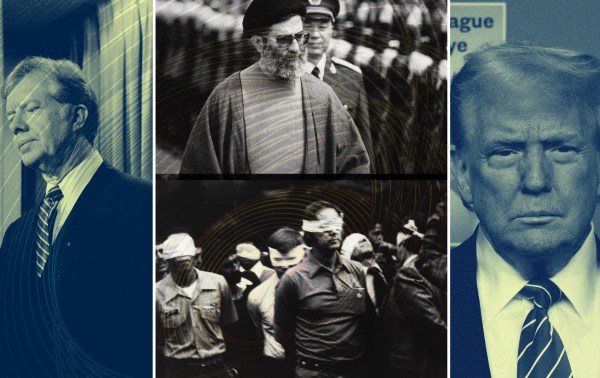The United Methodist Church (UMC) has historically regarded itself as a “big tent” denomination. But as member churches across the United States vote to disaffiliate from the UMC, the denomination has been losing congregations by the thousands. The number of churches headed for the exit increased from just 10 churches in 2019 to 5,643 in 2023.
Methodism flows out of the Wesleyan holiness tradition—named after Protestant reformer John Wesley—which seeks to unite believers with a common commitment “to reflect Christ in … behavior and lifestyle.” From their earliest days, Methodists downplayed theological distinctions that led to division, focusing instead on personal holiness. How can it be that a denomination intentionally built for diversity finds itself splitting congregations across the country? Was the “big tent” not big enough? Or had it become too big to remain meaningfully united?
Why have thousands of congregations voted to leave the UMC?
The cascade of churches voting to leave the UMC centers on one policy: the denomination’s as-yet-unofficial commitment to both ordain and marry LGBT people within the church. Formally, The Book of Discipline of The United Methodist Church—the policy document that governs all UMC congregations—does not allow “self-avowed practicing homosexuals” to be ordained or married at a UMC church building or by UMC clergy. However, some local churches in the U.S. have openly rejected the prohibition, and the presiding Council of Bishops clearly signaled in 2018 its desire to see the Book of Discipline amended at the UMC’s next General Conference. According to their “One Church Plan,” the UMC would “allow but not require” clergy to ordain and marry LGBT+ people. The conference was scheduled to be held in 2020 but had to be postponed because of the COVID pandemic, international travel challenges, and escalating tensions within the UMC regarding its LGBT+ policies.
A year before the pandemic, the UMC convened a special conference in an effort to calm those rising tensions. At that meeting, The Book of Discipline was amended to give congregations a window to leave the denomination after a two-thirds vote of its members while still retaining church property and assets (within certain limits). The overwhelming response of conservative congregations across the UMC to disaffiliate under the auspices of this provision caught denominational leaders off guard. Indeed, it represents the single greatest schism within a major Christian denomination since the Civil War.
The very title of the special provision in the Book of Discipline—Disaffiliation of a Local Church Over Issues Related to Human Sexuality—makes clear why thousands of congregations have voted to leave the UMC. The first paragraph of the section points out the fault line:
Because of the current deep conflict within The United Methodist Church around issues of human sexuality, a local church shall have a limited right, under the provisions of this paragraph, to disaffiliate from the denomination for reasons of conscience regarding a change in the requirements and provisions of the Book of Discipline related to the practice of homosexuality or the ordination or marriage of self-avowed practicing homosexuals as resolved and adopted by the 2019 General Conference, or the actions or inactions of its annual conference related to these issues which follow.
The provision may have been written broadly enough to allow more liberal congregations to leave the UMC because “self-avowed practicing homosexuals” could not officially be ordained or married in the church. However, it was conservative congregations that felt the time for disaffiliation had come. Their window for leaving the UMC under somewhat favorable financial terms closed on December 31.
What is unique about the UMC schism?
The UMC, the second-largest Protestest denomination in the United States (according to Pew data from 2014), is not alone in facing denominational divisions over LGBT+ issues. Presbyterians, Baptists, Lutherans, and Anglican/Episcopal believers have all divided into differing camps based (at least in part) on how they interpret the Bible’s teaching on matters of human sexuality. The Vatican’s recent decision to allow blessings for same-sex couples has caused an uproar in the Catholic Church.
These splits center on a set of fundamental questions about the nature of marriage and human sexuality. Is marriage a rite to be reserved for one man and one woman only? Do the prohibitions against homosexuality in the Bible pertain only, as some have argued, to cult prostitution, exploitative relationships, and excessive lust in the ancient world? Or do they prohibit all same-sex relations, including those in which a couple intends a lifelong, monogamous relationship? When people experience gender incongruity, should they assume their inner sense of self as a man or woman is a reliable guide to their gender? Or should they look to their anatomy as a God-given indicator of gender?
The answers church leaders offer to questions like these usually expose a fault line that divides both individual believers and entire congregations. The division rarely has to do with differences in theology proper (i.e. the nature of God) but with unexamined assumptions about theological anthropology (i.e. the nature of humans). The UMC is not experiencing anything unique in this respect. However, the scope and speed of the schism in the UMC is remarkable on the American religious landscape.
Where do you put 1.5 million Methodists?
More than 7,000 churches—about 25 percent of U.S. congregations—have left the denomination since 2019. With about 6.5 million people on the UMC’s membership rolls, that means more than 1.5 million Methodists in the U.S. are looking for a new denominational home. Where are they likely to land?
Some congregations have already decided to remain independent or loosely affiliated with movements like The Methodist Collegiate Church, which joins together “autonomous Methodist churches to walk together with Christ.” Others, like Frazer Methodist Church in Montgomery, Alabama—once the largest UMC congregation in the U.S.—have already affiliated with the Free Methodist Church. Most departing UMC congregations, however, are banding together in the newly constituted Global Methodist Church. This new Methodist tent, while still smaller than the UMC, is quickly growing. It already boasts more than 2,000 congregations and plans to hold its first General Conference in the fall of 2024. The GMC “warmly welcomes” clergy and congregations leaving, or planning to leave, the UMC from all around the world, and its transitional leadership team is made up of international leaders formerly affiliated with the UMC.
And whether many international congregations will disaffiliate from the UMC and join the GMC remains a matter of speculation. The biggest unknown is how UMC churches in the Global South (Africa, Asia, and South America) will respond after the next General Conference in late April 2024. These churches tend to be more conservative than their American counterparts on questions of human sexuality. If the General Conference votes to permit the ordination and marriage of LGBT+ people, there is a good chance many international congregations will disaffiliate. Some African leaders in the UMC have already stated as much, clearly rejecting draft proposals that would permit UMC churches in the U.S. to adopt more liberal policies than other regions of the world.
If the shakeup among churches in the U.S. is replicated around the globe in 2024, the “big tent” of United Methodism may be much smaller in a matter of years. The nature of changes made to the Book of Discipline at the General Conference in 2024 will determine how widespread these changes may be.







Please note that we at The Dispatch hold ourselves, our work, and our commenters to a higher standard than other places on the internet. We welcome comments that foster genuine debate or discussion—including comments critical of us or our work—but responses that include ad hominem attacks on fellow Dispatch members or are intended to stoke fear and anger may be moderated.
With your membership, you only have the ability to comment on The Morning Dispatch articles. Consider upgrading to join the conversation everywhere.